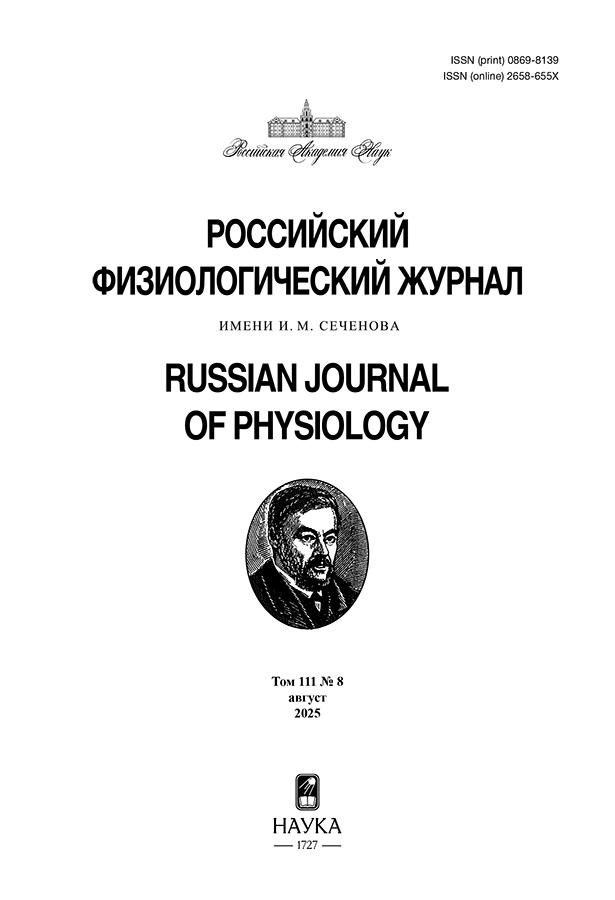Rossijskij fiziologičeskij žurnal im. I.M. Sečenova
Russian Journal of Physiology (p-ISSN 0869-8139, e-ISSN 2658-655X) is issued monthly and publishes the works in all fields of physiology and physiological aspects of related sciences — zoology, anatomy, histology, embryology, molecular biology, biochemistry.
The journal is peer-reviewed and is included in the VAK list of journals for publishing the works of degree candidates. Currently, the papers are indexed in the VINITI, RISC (elibrary.ru), EBSCO, Google Scholar, and RSCI (on the Web of Science platform) databases. The papers are submitted in electronic form.
Articles are translated and published in the Journal of Evolutionary Biochemistry and Physiology (indexed in WoS, impact factor (2022) - 0.6).
The chief editor is a member of the RAS L.G. Magazanik
Media registration certificate: ПИ № ФС 77 – 67154 от 16.09.2016
Current Issue
Vol 111, No 8 (2025)
Preface by the Guest Editor
Прогресс в исследованиях нейрофармакологических механизмов развития и инновационных подходов нейромодуляторной терапии заболеваний спинного и головного мозга
 1245-1246
1245-1246


REVIEW
Investigation of Parkinsonism Development Mechanisms and Novel Approaches to Multisystem Neurorehabilitation
Abstract
 1247-1267
1247-1267


The Effect of Dopamine on Neuroplasticity in Spinal Cord Injury
Abstract
 1268-1295
1268-1295


The Role of Dopamine in Chronic Pain: Neuroinflammation and Neurogenesis
Abstract
 1296-1321
1296-1321


Cell therapy and biomaterials: modern approaches in the treatment of spinal cord injury
Abstract
 1322-1356
1322-1356


Studies on mechanisms of development and electrostimulation approaches to migraine therapy
Abstract
 1357-1378
1357-1378


Role of Trace Amines and Their Receptors in Neuroinflammation Development and Posttraumatic Spinal Cord and Brain Repair
Abstract
 1379-1403
1379-1403


Neural interfaces: applications, innovative approaches, biocompatibility, biomimetics
Abstract
 1404-1438
1404-1438












